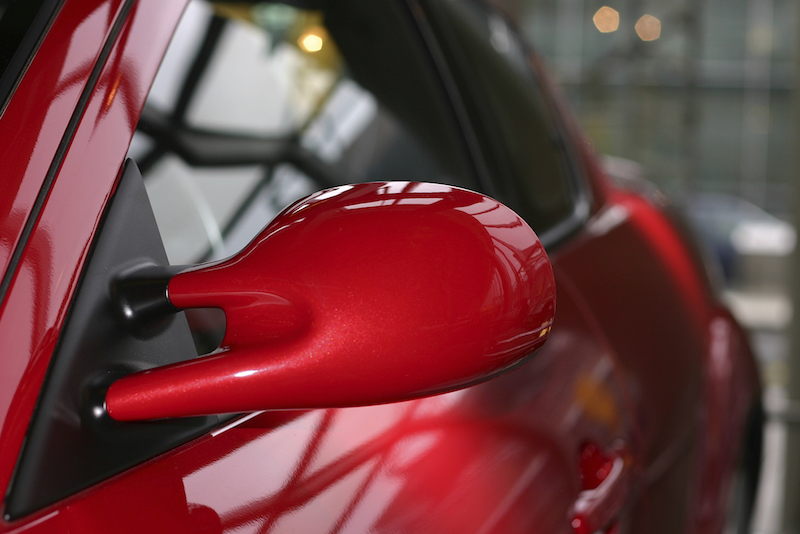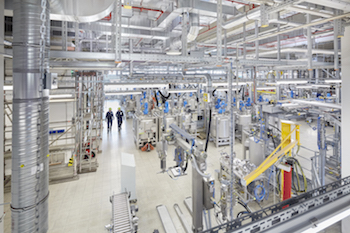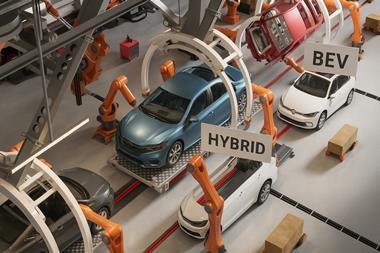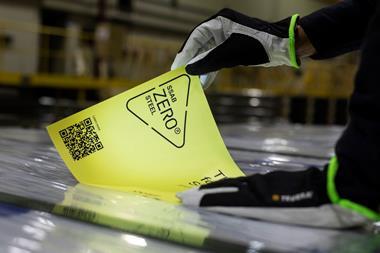As the coatings company turns 150 years old, its global technology director reflects on the sector’s trends, challenges and opportunities – including new materials, environmental concerns and multi-functionality

Joanne Perry (JP): Can you briefly outline the differences in requirements between coatings for light vehicles and those for heavy-duty commercial vehicles?Klemens Bartmann (KB): The main differences in requirements for light-vehicle coatings and heavy-duty truck coatings lie in the specific use of the vehicles as well as the application of materials. In most cases, the heavy-duty truck coatings are applied in low-bake processes, so require technologies which allow lower-temperature baking schedules, whereas the typical light-vehicle materials are high-bake systems which require baking temperatures of around 130-160°C. There are also differences in the chemical properties due to the lifecycle of a light vehicle compared to that of a heavy-duty truck.
JP: What is the reason for high bake being used for light vehicles and low bake for heavy-duty vehicles?KB: High baking temperatures have been used for many years in solvent form and also in waterborne coating technologies and they provide access to different crosslinking, like polyester melamines or acrylic melamines. In the low-bake technology, the most prominent crosslinking mechanism is with hydroxyfunctional polymers and polyisocynantes which are then the second component of the two-component system, when you want to bake in the same curing process metal parts as well as plastic parts. In the heavy-duty truck industry it is very common to coat plastic parts and metal parts in the same run. In the traditional light-vehicle paintshop, the OEMs prefer to paint the metal pieces in a high-bake process before then mounting the plastic parts, which are coated in a separate process at lower baking temperatures.
JP: What special coating requirements do premium vehicle-makers have?KB: For a premium vehicle, the biggest requirement – similar to plastic coating – is a very high-quality surface appearance, a very smooth topcoat. This comes partly from the clearcoat which is used but is influenced by the complete build, from the substrate to the e-coat to the primer layer to the basecoat layer. This is one very critical performance attribute; others are protection of the body or part against mechanical damage like stone chipping or chemical and other environmental influences like acid rain, and of course UV [ultraviolet] light. So there is a combination of appearance and functional performance attributes.
JP: How have OEM requirements changed over time and how has Axalta adapted its offering in response?KB: In the early days of car coatings, the requirements of the OEMs were basically to have a very economical process, so high throughput at the highest possible performance quality. This has not really changed; it is still the most critical requirement – to be very productive, to reduce the time needed to coat the full body and to achieve a best-in-class quality in topcoat appearance and at the same time an increased functionality of the coating.
“Carbon fibre is already and will become a challenge for coatings technology as we see more visible parts of cars made out of carbon fibre in the future” – Klemens Bartmann, Axalta
We at Axalta started in coatings in 1866 – we had our 150th birthday this year – so we started early working with the OEMs to develop and to co-engineer the newest processes and applications. Just to give some examples, in order to reduce the booth length and also the energy consumption of the coatings process, Axalta has developed the three-wet, high-solids system and introduced it in the market with great success, as well as three-wet waterborne systems at various customers, allowing them to reduce energy consumption and improve productivity. So Axalta is engaged in various customer projects to further develop these high-productive and high-quality processes.
JP: Can you name any of those vehicle manufacturers?KB: It’s across the board. If you go to the top ten OEMs in the world, we have relationships with these big OEMs and active development programmes looking at their requirements for the future.
JP: What is the impact of vehicle lightweighting on coating requirements?KB: We believe that lightweighting will be an absolutely crucial trend in the future, and it is right now. Some of the carmakers have significantly increased the amount of lighter metal, plastic substrates and composites in their vehicle designs. Axalta is part of these developments. When you see the new Ford F-150 truck, a full aluminium body for which Axalta is supplying the coatings from e-coat to topcoats, that’s a good example of where a mass producer like Ford has significantly increased the amount of lighter substrates in the body construction. Aluminium is one example, magnesium is another, but also specialised steel variants and plastic polymer substrates and composites. Carbon fibre is already and will become a challenge for coatings technology as we see more and more visible parts of cars made out of carbon fibre in the future.
JP: Do you have to change the chemical composition of the coatings to assist OEMs’ lightweighting efforts?KB: In some cases the chemical composition needs to be changed or at least adjusted, and this is mainly due to the temperature requirements, as for most plastic substrates and composites only lower-temperature bakes are possible due to the thermal impact of higher temperatures. Another critical part, of course, is adhesion. These plastic substrates will also need a perfect adhesion to the coating layer, so also here new developments will be required in some cases.
JP: How closely does Axalta work with robotics companies to ensure the efficient application of its products?KB: The equipment makers are very important partners for us and we are engaged in close work to test new coatings systems, together with our customers. To have the equipment supplier as well as the coatings supplier, Axalta, at the earliest time of the project working together on adjusting the coating equipment and application process is key to the success of these product developments.
“Bringing higher functionality into paint is going to be a future trend... The dynamics of the coating technology are really not standing still"– Klemens Bartmann, Axalta
JP: In what other ways can Axalta help vehicle-makers to increase painting efficiency?KB: We’ve already talked about the three-wet systems where the primer layer is not fully baked but just undergoes a pre-heat process or even only a flash-off before basecoat and clearcoat are applied. The other way which also helps productivity in the plant is a primer-less system.
Axalta is also supporting the move to higher-solid systems, which have already been in use in North America for some time but are gaining traction in other markets like China. Due to VOC [volatile organic compound] regulations, we are seeing a trend toward higher-solid systems in which the solvent content of a coating can be significantly reduced and the VOC taxes which are due in China can be avoided.
Another way for Axalta to improve the productivity and the efficiency of our customers is to supply systems which allow a high-quality throughput, reducing the number of cars which have to be rerun – the direct run rate – which, all in all, helps to reduce waste and improve efficiency.
 Axalta operates a waterborne coatings plant in Wuppertal, Germany, where the company originated
Axalta operates a waterborne coatings plant in Wuppertal, Germany, where the company originatedJP: How much of an impact do environmental concerns have on Axalta’s product development?KB: Environment and sustainability are a tremendously important focus for our development work and that started many years ago, when the first waterborne coatings were developed and introduced by Axalta. I also want to mention the introduction of high solids, which were crucial in reducing solvent emissions in plants. And that story continues; we were talking about the lightweight trend, which is of course a result of the CO2 emissions reduction targets for OEMs.
I could also add the reduction and elimination of particular materials like lead-containing pigments; full compliance with the REACH [Registration, Evaluation, Authorisation and Restriction of Chemicals] regulations which is, for Europe, a critical requirement; and, last but not least, the China VOC tax which is challenging product and technology development. Axalta has found ways to meet the requirements and to help our customers to be successful.JP: What other technological innovations might we see in the future? What about self-healing paint?KB: This is a very interesting question because bringing higher functionality into paint is going to be a future trend. We already see this in the areas of very high crash resistance clearcoat. We will see this in the future also in what we call smart coatings, which have additional features rather than just displaying a particular colour and having a glossy surface. You mentioned self-healing paint but there is also self-cleaning capability; this is an area where we see future trends and needs in the OEM market.
The dynamics of the coating technology are really not standing still. We should also not forget the colour demands of the market; we see each year new colours, new pigments, new effects coming into the market and gaining traction. We have to pay attention to combine the aesthetical requirements – new colours, new effects, new pearls, new colour shades – with the high-quality, high-productive performance of the coatings.








































